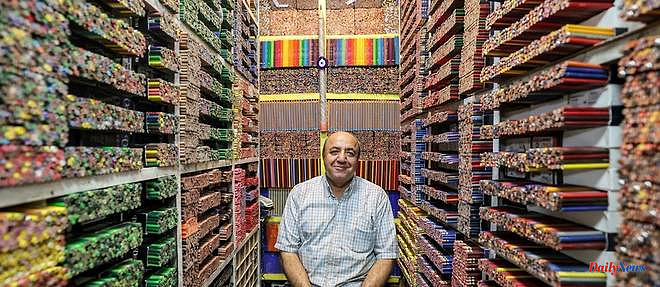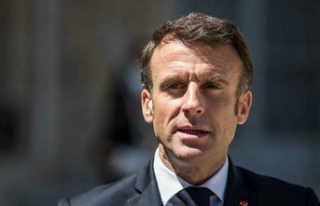At the time of all-digital, in Iran as elsewhere, Mohammad Rafi is resisting by passionately defending the colored pencil, the only product he has sold in the Grand Bazaar of Tehran for 35 years.
No markers, pens or brushes. Nothing but colored pencils, but by the thousands, which cover, from floor to ceiling, the walls of the shop.
"I don't know how many there are, but I have about 200 shades of color available," proudly announces Mohammad Rafi, the 50-year-old shopkeeper.
The "Medad Rafi" shop ("Rafi's pencils", in Persian) is so atypical and photogenic that it has become one of the attractions of Tehran's Grand Bazaar.
But you have to find it. A real treasure hunt in the maze of teeming alleys of this "city within the city" in the heart of the Iranian capital.
Located in the middle of a narrow and poorly lit passage, the shop is tiny. About 3 square meters but that's enough for Mohammad Rafi who takes up most of the space, welcoming the customer behind the counter.
At first pleasant, the seller of pencils rarely looks gray. "Every time customers show up, I enjoy it, even if they don't buy anything," he smiles.
That morning, he gave ten minutes to a schoolgirl looking for a few pencils, including one blue and one orange.
Mohammad Rafi presents her with a selection of about ten pencils of each color, which she tries on a drawing pad placed on the counter.
"Depending on what he wants to do with it, I advise the customer on the color, the texture or the brand", explains the trader, who only sells the pencils individually, never stored in a box.
It also adapts to all budgets, many amateur designers are not wealthy. "There are all prices. The most expensive pencil costs 100,000 tomans (about 2 euros) but it is one of the best." These often come from foreign manufacturers, especially European or American.
Of course, Mohammad Rafi is aware that the colored pencil had its golden age, which dates back to the last century, when all children had it in their kit.
After studying as a technician in the 1980s, the Iranian began his professional life in a pencil manufacturing company.
Drawing lover since childhood, he fell in love with this basic product, both practical and artistic. And decides to open, a few years later, a shop specialized in the district of the bazaar devoted to the arts, with for neighbor, a merchant who dedicates himself to calligraphy, very appreciated in Iran.
And 35 years later, the 50-year-old says "not to be worried" about his next years as retirement age approaches.
But, contrary to the tradition of the bazaar, where the signs often remain in the family, he knows that his son, a doctor, "is not interested in this work".
In the meantime, Mohammad Rafi wants to continue to satisfy the diversity of his clientele's demands even if "some pencils are no longer produced". "Fortunately, I've stocked up quite a bit" over the years, he says, brandishing his oldest pencil, "made 72 years ago."
05/25/2023 13:54:07 - Tehran (AFP) - © 2023 AFP












